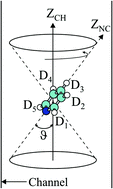Molecular dynamics and ordering of pyridine in its cyclophosphazene inclusion compound as evaluated by solid state 2H NMRspectroscopy
Abstract
Variable temperature

* Corresponding authors
a
Institut für Physikalische Chemie, Universität Stuttgart, Pfaffenwaldring 55, Stuttgart, Germany
E-mail:
k.mueller@ipc.uni-stuttgart.de
Fax: (++49) 711 685 4467
Tel: (++49) 711 685 4470
Variable temperature

 Please wait while we load your content...
Something went wrong. Try again?
Please wait while we load your content...
Something went wrong. Try again?
J. A. Villanueva-Garibay and K. Müller, Phys. Chem. Chem. Phys., 2006, 8, 1394 DOI: 10.1039/B516765E
To request permission to reproduce material from this article, please go to the Copyright Clearance Center request page.
If you are an author contributing to an RSC publication, you do not need to request permission provided correct acknowledgement is given.
If you are the author of this article, you do not need to request permission to reproduce figures and diagrams provided correct acknowledgement is given. If you want to reproduce the whole article in a third-party publication (excluding your thesis/dissertation for which permission is not required) please go to the Copyright Clearance Center request page.
Read more about how to correctly acknowledge RSC content.
 Fetching data from CrossRef.
Fetching data from CrossRef.
This may take some time to load.
Loading related content
